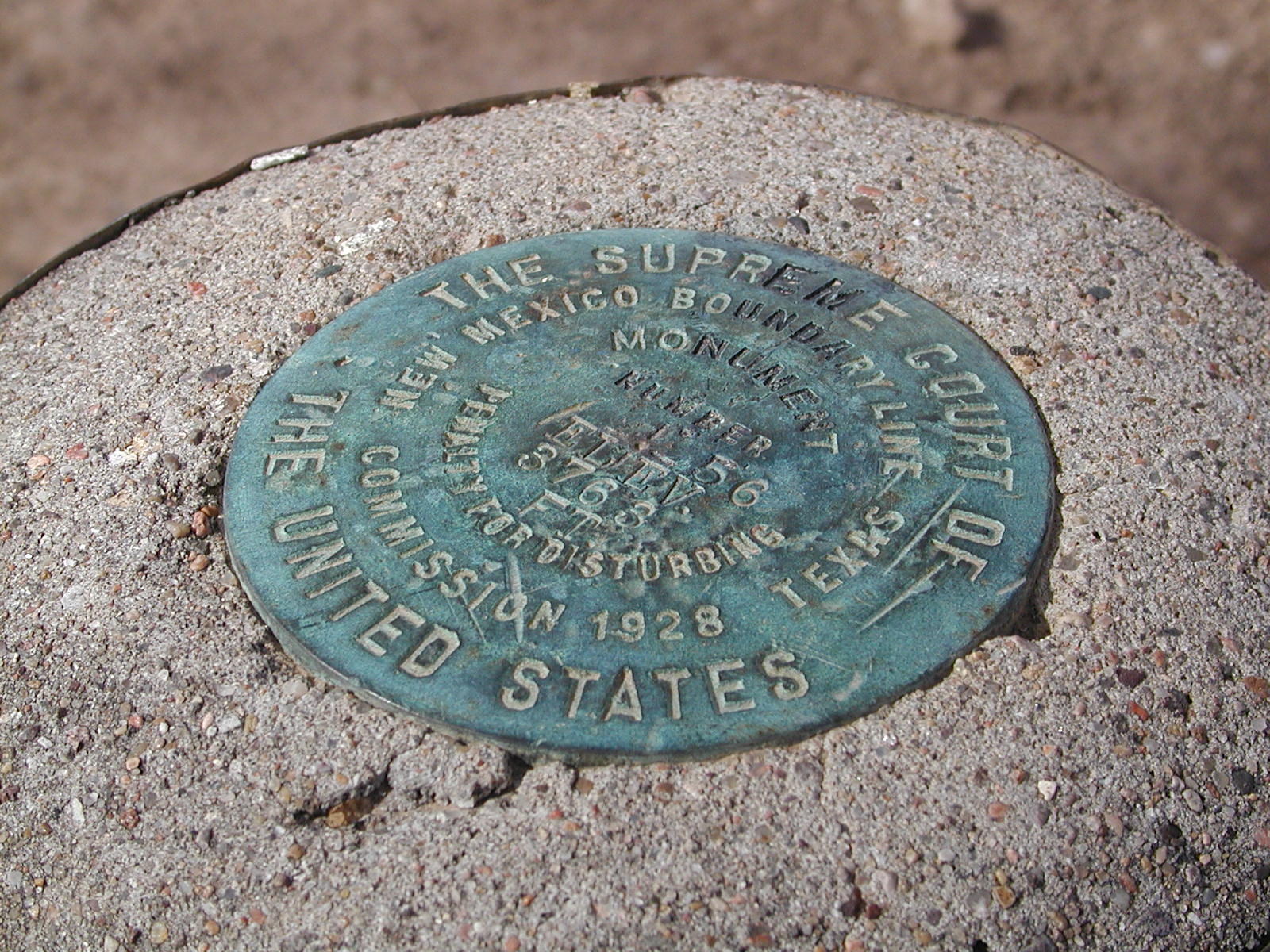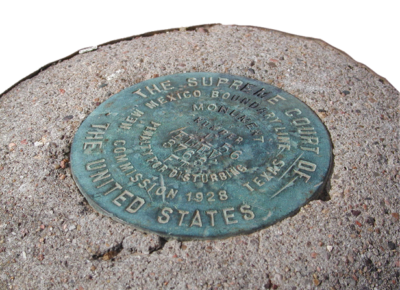The Rio Bravo del Norte, or the Rio Grande, meanders its way from Colorado to the Gulf of Mexico. The Great River of the North historically would flow uninterrupted to the Gulf of Mexico, but now the water from Colorado is lucky to make it there. The Big River, as it is also known, is the border between multiple Mexican States and even our International Border between Texas and Mexico. For a mere 25 miles though The Rio Grande is so much more. It is the border between Texas and New Mexico by El Paso. Laying between the International Boundary, being 31 degrees and 47 minutes North Latitude, and the North line of Texas, being 32 degrees North Latitude, this short snaking section of the Rio Grande lead to so much contention that it landed in the Supreme Court. Once again, Samuel Stinson Gannett was called upon to not only resolve its location, but to resolve its location as it existed on September 9th, 1850.
The history of this short segment of the Rio Grande is vast dating back to 1595 with the colonization of New Mexico by Don Juan de Onate. Technically though, our history starts when the Treaty of Guadalupe Hidalgo was signed on February 2nd, 1848, putting an end to the Mexican-American War. The treaty defined the international boundary, 25 miles of it being the disputed section eventually becoming the dividing line between Texas and New Mexico. Once the treaty was signed a commission was assigned by both Countries to survey the common line. As always, the map used for the treaty was in error and the international border geographically fell about 32 miles North of where depicted on the map. The map used in the treaty was drawn by John Disturnell and later partially copied by General Land Office principal draftsman Ephraim Gilman in 1848. Both maps had distortions in West Texas along the Rio Grande eventually leading to more arguments and the eventual disbanding of the commission all together in 1852. The Gadsden Treaty of 1853 solved this problem and made room for the proposed Southern route of the Transcontinental Railroad. This fixed the international border at this section at 31 degrees and 47 minutes North Latitude. Prior to that though two main surveys were made on opposite sides of the Rio Grande. On the East side a survey was made by Charles Radziminski. Radziminski has a very colorful history as he came to American in 1834 as a Polish Revolutionary exile. He climbed the ranks of the United States Topographical Engineers eventually landing the role as the Secretary of the United States Boundary Commission. His name is amongst significant others on a piece of paper stuffed in a glass bottle buried five feet below the monument marking the initial point of the joint survey between the United States and Mexico. The other survey, on the West side, was made by Jose Salazar y Larregui and Agustin y Luis Diaz—titled the Salazar—Diaz Survey of 1852. This was a highly accurate and detailed survey for its day. Salazar was extremely talented and held the titles of astronomer, mineralogist and geographer. Diaz, on the other hand, climbed the ranks of the Mexican Corps of Engineers eventually taking charge of Mexico’s Geographic Exploration Commission.
Texas became the 28th State on December 29, 1845. A dispute arose between Texas and the United States and the area trying to become the New Mexico Territory. It wasn’t until President Millard Fillmore stepped in and convinced Congress to pass the Texas Boundary Act as approved by the President on September 9th, 1850. The Act defined the boundaries of Texas as “…thence on the said parallel of thirty two degrees of North Latitude to the Rio Bravo del Norte, and thence with the channel of said river to the Gulf of Mexico”. This Act, and description, created the Territory of New Mexico which eventually became the 47th State on January 6th, 1912. The State Constitution stated “…thence along the 32nd parallel to the Rio Grande, also known as the Rio Bravo del Norte, as it existed on the 9th day of September, 1850; thence following the main channel of said river, as it existed on the 9th day of September, 1850, to the parallel of 31 degree 47 minutes North Latitude”. Prior to becoming a State though, New Mexico had to agree to a joint resolution recognizing the survey done by John H. Clark of the 32nd parallel of Latitude.
Sample page selections from the rare 1930 Supreme Court Document highlighting the survey report by Gannett. Courtesy of Dartmouth College & Texas General Land Office
Once complete, Samuel Stinson Gannet presented his report to the United Stated Supreme Court. This well put together report details the history of the dispute and the instructions by which he did his survey. In detail, Gannett describes his work and the instruments used. He lists each monument, and references, with true bearing and distances to others for future retracement. He also created a highly detailed map of the entire line with contours. This report by Gannett was given to the United States Supreme Court on July 17, 1930 and was quickly approved settling yet another highly disputed line between two adjoining States. And although it may not make sense today, the Rio Grande has been permanently monumented as it was on September 9th, 1850.
Note: Special thanks to Kery Greiner, Steve Cobb & Dr. Kurt Wurm and all those who volunteered on the 2005-2006 retracement by the Southern Rio Grande Chapter of the New Mexico Professional Surveyors and the Paso Del Norte Chapter of the Texas Society of Professional Surveyors.

